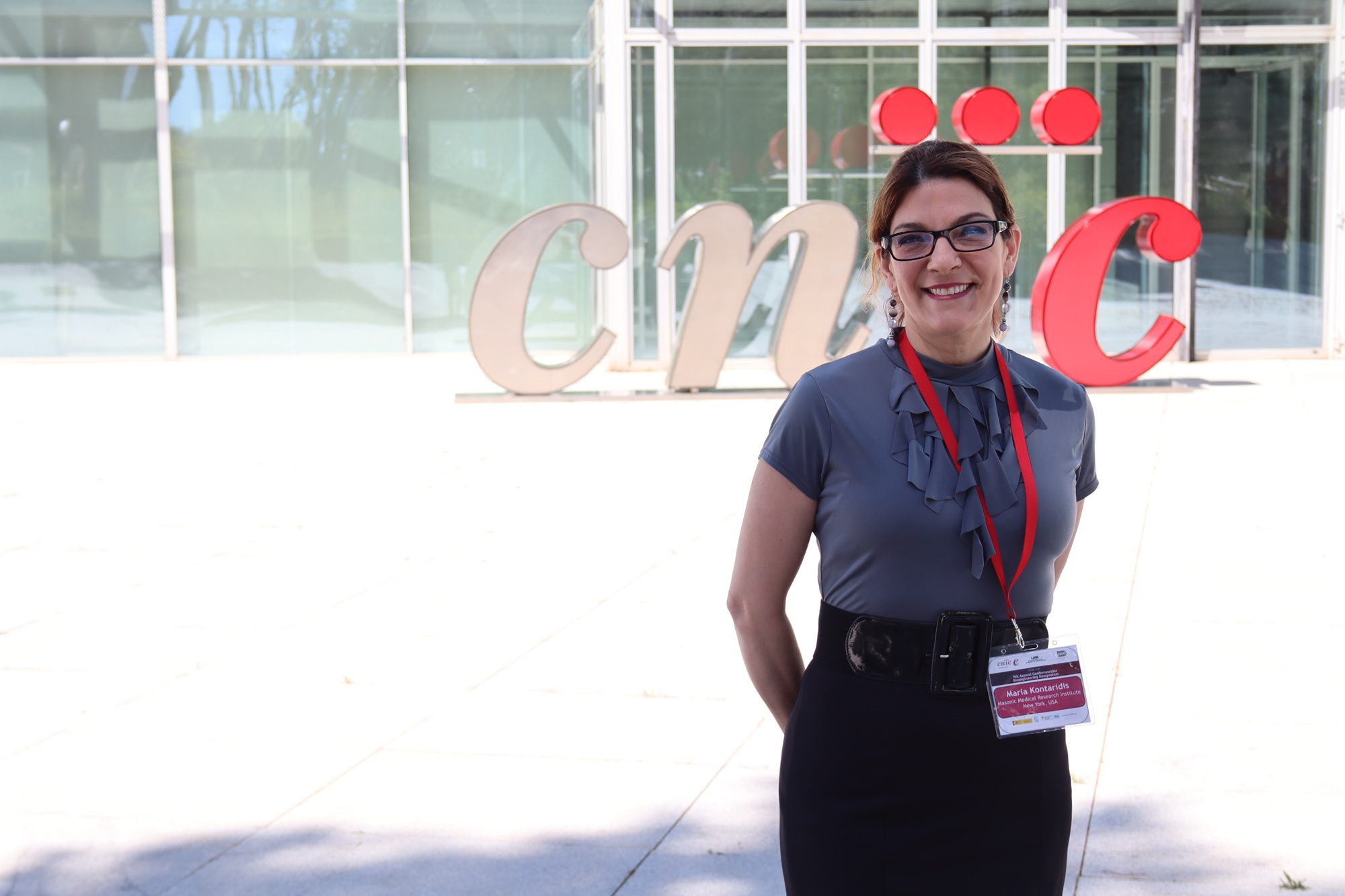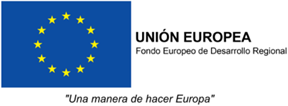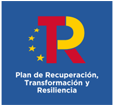Dra. Maria Kontaridis: “Archaeology remains one of my first loves”
Dra. Maria Kontaridis currently serves as the Gordon K. Moe Professor and Chair of Biomedical Research and Translational Medicine, as well as is the Executive Director and Director of Research, at the Masonic Medical Research Institute
With over 20 years of experience in academic medicine and biomedical research, Dra. Maria Kontaridis currently serves as the Gordon K. Moe Professor and Chair of Biomedical Research and Translational Medicine, as well as is the Executive Director and Director of Research, at the Masonic Medical Research Institute, a leader in strategic, scientific, and operational initiatives in cardiovascular biology, genetics, rare diseases, and translational medical research. Prior to this, she held progressively senior academic positions at Harvard Medical School and Beth Israel Deaconess Medical Center, including Associate Professor of Medicine and Director of Basic Cardiovascular Research. Her career has focused on bridging basic science and clinical application, securing major NIH funding, leading multidisciplinary teams, and advancing personalized medicine. She has extensive expertise in molecular and cellular biology, academic leadership, federal funding strategy, and institutional development, with a strong commitment to mentoring, innovation, and global scientific collaboration. Her lab is focused on understanding the mechanisms causal to the development of congenital heart diseases, heart failure, diabetes/obesity, autism, autoimmune disorders, gastrointestinal diseases, and cancer. Her research is rooted in identifying novel genetic mutations and determining their effects on the cellular and molecular pathways that ultimately modulate development, severity, and pathogenicity of these conditions. With a commitment to advancing scientific understanding, Dr. Kontaridis strives to uncover transformative mechanistic insights that can lead to the development of novel therapeutics for these disorders in the near future.
- Your background reflects a remarkably broad range of research interests -spanning cardiology, diabetes, neurobiology, and beyond-. What has motivated you to pursue such a diverse set of fields?
It can definitely seem broad at first glance, but in reality, my work is quite focused. I'm a molecular biologist by training, and my expertise lies in a field called molecular signaling.
To explain it simply: I study what happens when a cell receives a signal from outside, for example, a hormone, a neurotransmitter, or even mechanical stress, and how that signal travels through a complex relay of proteins inside the cell until it reaches the DNA. Once there, it influences how the cell behaves: whether it should grow, divide, migrate, or even self-destruct.
What’s fascinating is that this signaling machinery is almost identical in every type of cell, whether it’s a neuron in the brain, a cardiomyocyte in the heart, or even a cancer cell. The main differences lie in the specific genes each type of cell activates in response to those signals.
Because of this universality, by studying these core mechanisms, I can work across multiple diseases: heart conditions, cancers, autoimmune disorders, neurological conditions like autism. It's all connected at the molecular level.
- How do you study these processes today, especially with new technologies?
We use a combination of classic molecular biology tools, those haven't gone out of style, but we've also embraced the newest technologies available.
For instance, one major focus of my lab is using CRISPR gene editing and induced pluripotent stem cells (iPSCs) to model diseases and identify therapeutic targets. We also incorporate RNA sequencing and single-cell RNA sequencing to look at what genes are turned on or off in individual cells. Genomics and proteomics help us understand broader patterns across entire tissues or even patients. Phosphoproteomics, a bit more specialized, lets us track how proteins themselves are modified during signaling.
By combining these tools, we can see, with incredible precision, how a single mutation in one person can set off an entire chain reaction leading to disease. It's like going from looking at a blurry photograph to having a microscope that shows individual pixels in real time.
- This sounds like very foundational work. Are you also bridging into translational science, moving discoveries toward patient treatments?
Yes, absolutely. My early training was purely basic science. During my PhD, I focused on how signaling pathways worked in isolation, without thinking much about disease. But during my postdoctoral fellowship, I trained under a physician-scientist who encouraged me to think the other way around: start with the disease, then work backward to understand the mechanism.
That shift completely changed my approach. Today, we always start by asking: Why does someone get this disease? What goes wrong at the molecular level? And how can we fix it?
As mentioned before, we use iPSCs and CRISPR- a technology that is not only critical for understanding the mechanisms of disease etiology, but which has revolutionized the way we think about treating, and curing, diseases. For example, using this approach, there are now FDA-approved therapies using CRISPR to treat familial hypercholesterolemia and sickle cell anemia, diseases that, until recently, were thought incurable.
Most of my work focuses on pediatric diseases, severe congenital heart defects, autism spectrum disorders, and some autoimmune diseases. Our hope is to use these revolutionary technologies to do more than manage symptoms. We aim to correct the root cause at the genetic level, to truly cure.
- I read that your research also touches on the connection between heart disease and neurodevelopmental disorders. Could you explain this intriguing link?
Yes, this is one of the most fascinating aspects of what we’re discovering.
Genetic mutations, especially ones that occur very early in development, don't usually affect just one organ. They often impact multiple systems, but the effects might look different depending on the tissue.
We’re finding that children born with severe congenital heart defects often also have subtle or overt neurocognitive anomalies. Conversely, some children diagnosed with autism later on have early histories of congenital heart issues.
This suggests a deep biological link between how the heart and brain develop, perhaps through shared molecular pathways or developmental genes.
Our hope is that by better understanding these connections, we might identify early interventions. Perhaps, we can even correct these genetic mutations with CRISPR, before these defects manifest at all.
- CRISPR sounds like it could revolutionize medicine. But we’ve been hearing about it for almost a decade now. Why has it taken so long?
In science, discovery is just the first step. After that, it takes years, sometimes decades, to refine, to make sure it’s safe, reproducible, and ethically sound.
When CRISPR first became widely known, we were excited but cautious. One big fear was "off-target effects”- editing the wrong part of the genome and unintentionally causing new problems.
Today, technology has matured dramatically. We are much better at designing precise targeted edits, minimizing risks, and deeply analyzing outcomes before clinical use.
I truly believe that in the next few years, CRISPR, and gene editing more broadly, will become a cornerstone of medicine, alongside surgery, pharmaceuticals, and immunotherapy.
- It feels like science moves in cycles: first, gene therapy was the big promise, then immunotherapy took the spotlight, and now gene therapy is making a comeback, better and stronger.
The difference now is integration. We’re combining tools developed over the last 20 years. For example, gene therapies can now be delivered with nanoparticles, which were originally developed for immunotherapies.
We’re not just revisiting old ideas, we’re layering new capabilities on top of them, making them more targeted, more efficient, and ultimately safer.
It’s a very exciting time because all the pieces are finally coming together..

- As Director of the Masonic Medical Research Laboratory (MMRL), how do you manage your time between science and administration?
It’s a real balancing act. When I first took this position, mentors warned me: Be prepared, the administrative work will be overwhelming.And they were right. It’s like doing two full-time jobs simultaneously: running a research lab and managing an entire institute.
Thankfully, I have an incredibly talented, independent team. They’re able to carry forward the deep experimental work. My role now is more to provide the vision, help troubleshoot major scientific hurdles, and secure resources so the lab can thrive.
At the same time, leading the institute has been a joy. I get to recruit some of the best minds in the country, bring them together under one roof, and foster collaborations that are greater than what any single lab could achieve.
Today, we have 67 brilliant people at the institute, and we’re growing. It’s deeply rewarding, but yes, it can also sometimes be exhausting.
- Did you ever receive formal training in leadership or management?
In a way, yes. In college, I double-majored in classical archaeology and chemistry — two fields that seem unrelated, but both fueled by curiosity. I also minored in business administration, without knowing if it would ever be useful.
Later, during my PhD at Yale, I enrolled in a "mini-MBA" program designed for scientists. It turned out to be one of the smartest things I ever did. I learned finance, marketing, operations, all the things nobody tells you you'll need when you run a lab-let alone a research institute!
What no one tells you during your training is that running a scientific lab is like running a small business. You manage budgets, hire and mentor staff, develop strategic plans, and advocate for funding. It is a set of skills essential for the success of any scientist and lab.
- You mentioned archaeology earlier. Is it still a passion for you?
Absolutely. Archaeology remains one of my first loves. I was especially fascinated by the Etruscans, the mysterious ancient civilization of Italy. Even though I have Greek heritage, it was the Etruscans who captured my imagination.
In terms of future travel, I still dream of visiting Morocco and Egypt to explore archaeological sites. History, culture, and discovery are different types of science, but the sense of wonder is the same.
I'm grateful it remains a hobby because I think making it a career might have changed how I feel about it. Now, it can be pure joy.
- I have to say, this part of your journey would inspire many young people.
Exploring widely, meeting diverse people, traveling, learning new things, all of those shapes who you become.
I believe fear holds people back more than anything else. Fear of making the wrong choice. Fear of failure. But there’s no such thing as a wrong path. Every experience teaches you something.
Taking risks, moving cities, changing careers, all of that can lead to the best opportunities. I spent 15 years at Harvard, but moving to a new institute in upstate New York was the best decision I ever made. It was a risk, but it led to new freedoms and discoveries- not just in my science, but in my personal growth as well.
- If you had unlimited resources and time, what would you pursue? In science or beyond?
I'm already engaged in some of this work, and I've always been someone who pivots and looks ahead. I'm constantly thinking about what's next, not just in the short term, but five, ten years down the line. I ask myself: Where do you want to go? What is your long-term vision?
For me, that vision increasingly involves starting companies. I’m already envisioning opportunities to launch pharmaceutical ventures based on the therapeutics we’re currently developing in the lab. The hope, of course, is to make these treatments widely accessible. If resources weren’t a limiting factor, I would gladly offer them for free. But at the very least, I want to reach a point where we can produce enough therapeutics to make a significant impact on patients, not just treating their disease, but truly curing it as well.
This goal is deeply personal. My mother passed away from lupus, not directly from the disease, but from complications related to its long-term treatment. After 26 years of corticosteroid use, she developed pancreatitis, which led to pancreatic cancer. In the end, she died from the side effects of treatment, not from the illness itself.
That experience shaped my conviction: if I could pursue anything, it would be to find genuine, lasting cures, especially for autoimmune diseases, so that others don’t have to experience what my family did.
Dra. Maria Kontaridis have participated in CNIC Conference: 9th Annual Cardiovascular Bioengineering Symposium











